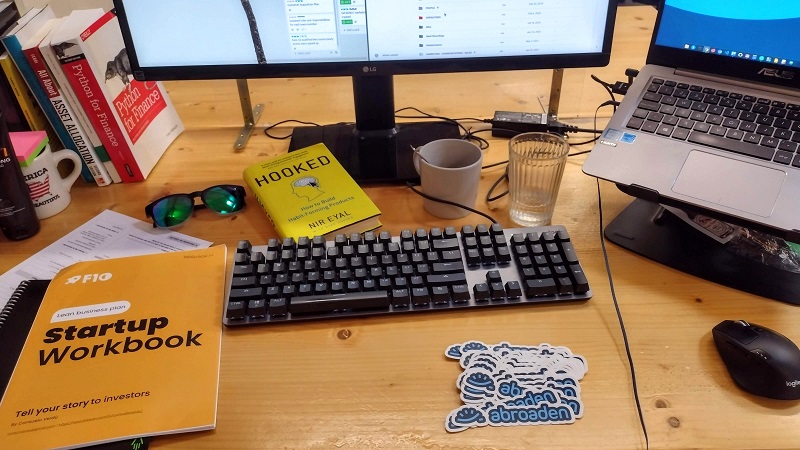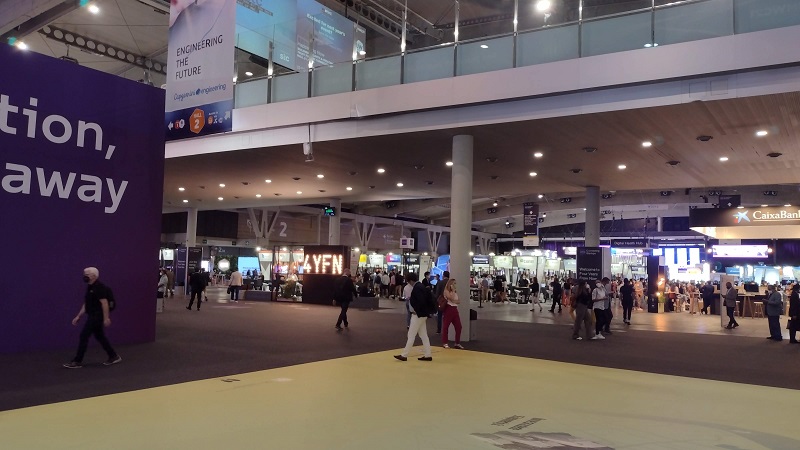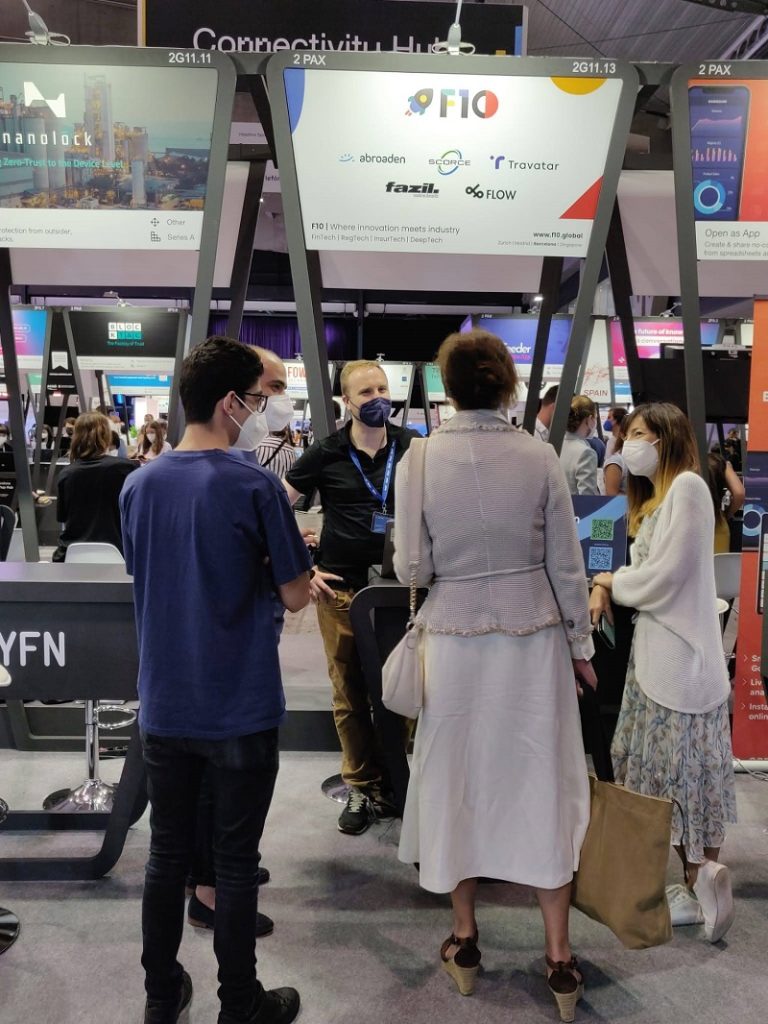This is the 6th part of a series of posts where Elliott shares his inside track on his experience of going through an incubator program. Here are the other editions:
Hi there!
My name is Elliott.
I’m the co-founder and CEO of abroaden.
We’re a Barcelona-based startup that’s creating the first wealth-building platform for people living abroad.
This Spring, we went through the F10 FinTech Incubator & Accelerator’s first incubation batch in Barcelona.
My friend Clemens at Barcinno kindly invited me to guest-post my experience throughout the program.
If you haven’t read the previous installments, you can find the links at the top of this article.
In this edition, I’m chronicling the run-up to its dramatic conclusion: demo day.
There was barely a moment to catch our breath following the last masterclass session.
Before we could even collect our thoughts, we were all back to work, frantically working on our deadlines.
Between June’s masterclass and the end of the program, we had to not only deliver our final milestones but also get everything ready for the big day.
In short, that meant getting all of our content ready for the investor funnel.
What’s the investor funnel? Fundraising for a startup is almost identical to marketing and sales.
Even in the United States, investors rarely, if ever, whip out their wallets and invest after hearing a pitch.
Here in Europe, that’s even less likely to happen.
Instead, getting investment goes through a long sales process, with different (marketing) content required along the way.
Ideally, you’ll already have some investors either introduced to you or, at the minimum, a program that will vouch for your credibility. (An incubator is fantastic in that regard).
From there, you start at the top of the funnel and work your way down, like this:
Pitching and your pitch deck
Pitching your startup is probably the most well-known part of the funnel.
It’s a public-speaking event that carries all of the drama of a stage performance.
Understanding that last part is critical.
A pitch session will likely only be a few minutes long.
During that time, your objective is not to raise money but to get to the next step down the funnel.
Here, you must tell a compelling story.
I covered this topic in my last post, but it’s worth repeating.
You only have a short amount of time to sell a high-level concept.
The investor pitch is not the time to talk granular numbers or diving into the innards of
your product.
Your story should focus on a protagonist, the problem causing them pain, and how your product is the hero they need. Throwing some impressive stats to back up your argument is fine, but again, focus on the high level by talking. If you can convincingly pitch without a deck, then you’re golden.
If everything goes to plan, you’ll get to the next step in the funnel.
The investor deck
When an investor (hopefully) reaches out to you, they’ll ask you to send over a deck.
At this stage, you’re giving them a slide deck that has more detail about your product than the story you told in the pitch but doesn’t go into deep details.
Investor decks should be easily scannable so that the analyst on the other end can quickly grab key points.
Investors receive hundreds of decks a week.
Like any quality piece of marketing content, yours should be distinguishable and clear to understand to her.
If the investor likes your deck, you’ll move deeper into the funnel, where they’ll want a more detailed look at your business plan.
Business plan
If an investor shows serious interest in your idea, she’ll ask you for your business plan.
It’s in this document that you can write as many details as possible. These include the market and opportunity size, financial analysis, SWOT, and anything else you find relevant.
Again, like with any other content, you want to make yours enjoyable to the reader.
Telling a story can turn a long, technical document into a captivating read.
The financials
Detailed financial analysis, even if theoretical, are obligatory at this point.
While we worked on these in previous masterclasses, we had to audit and validate them for this milestone.
F10 knows how important it is to get these documents as optimal as possible, which is why we spent so much time on them.
These documents will get you down to the last step in the funnel: due diligence with investors.
If the conversations and checks go as planned, you’ll get your funding and be on your way.
On top of these documents, we were also busy putting the final touches on our MVP.
The four weeks between June’s masterclass and the last week of the program flew by.
For me, that was mainly due to not stopping one day, not even during the weekends.
I spoke to other startups in the group, and we were all in the same boat.
Personally, I wouldn’t recommend working in overdrive as we did. However, in an incubator program like F10, you have strict deadlines and funding dependent on meeting those goals.
On the flip side, we had everything ready to go by demo day.
Looking back on it, I seriously doubt we would’ve made the progress we did without F10’s pressure.
The famed “Four Years From Now” or “4YFN” conference made its comeback in late July.
As Mobile World Congress’s cool little brother, 4YFN is a startup conference that runs in parallel to the world’s largest mobile technology gathering.
F10 was able to offer tickets to its startups along with shared time in its booth.
As a local startup, we jumped on this opportunity. Getting ready, however, wasn’t so easy.
For starters, the rules this year were unlike previous ones.
While there could be some networking, giving out SWAG and even business cards were prohibited.
That meant we needed to get creative, which, in these times, means QR codes.
Spending the better part of three days getting ready meant preparing funnels, landing pages, and downloadables, as well as a printout for the QR codes.
Additionally, every participant needed to get a Covid test done within 72 hours of attending the event. (Not that I’m complaining about this point. The onsite testing was efficient, and this sort of protocol is a robust safety measure).
We made it to the event on Wednesday, spending the entire day in the convention hall.
It was my first time at both 4YFN and MWC, and this year was truly different from what I heard.
Typically, 4YFN is in town, whereas MWC is at the gigantic Europa Fira convention center.
This year, we shared the same space at Europa Fira, which enabled us to visit both conventions at once.
The difference between the two events couldn’t have been starker.
MWC was a shell of itself, with barely any companies or people in attendance.
Indeed, I didn’t even see a cell phone during my time walking in their section of the fairgrounds.
Meanwhile, 4YFN was jam-packed, with both local and other European startups in full-on network mode.
The day went in waves; at some points, we talked to people non-stop, only to hit a half-hour of calm shortly after that.
When the day finished, we completed some excellent networking, met incredible people, and got a wonderful taste of 4YFN’s powerful potential.
We’re already looking forward to the next one in February 2022.
Aside from the experience of 4YFN and completing the milestones, we had tons of other tasks on our plate.
For one, we needed to prepare our investor outreach strategy, getting ready to start our “roadshow.”
More importantly, we needed to finalize our pitch and record it.
Combined, the time between June’s masterclass and demo week flew by like a rocket.
All I can say is: thank God for strong coffee.






